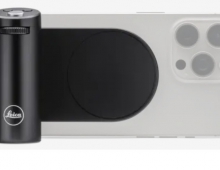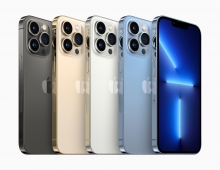
Android Expected to Reach Its Peak This Year
The worldwide mobile phone market is forecast to slow this year, with Android to maintain its leadership.
According to the International Data Corporation (IDC,) the worldwide mobile phone market is forecast to grow slightly more than 4.0% year over year in 2012, the lowest annual growth rate since 2009, due to a sharp decline in the feature phone market and sluggish global economic conditions. IDC estimates that vendors will ship a total of nearly 1.8 billion mobile phones this year, compared to 1.7 billion units shipped in 2011. By the end of 2016, IDC forecasts 2.3 billion mobile phones will be shipped to the channel.
The slow growth in the overall mobile phone market is primarily due to the projected 10.0% decline in feature phone shipments this year. Many owners of feature phones, sometimes known as "talk and text" devices, are holding on to their phones in light of uncertain job and economic prospects. Despite the decline in shipments, feature phones will still comprise 61.6% of the total mobile phone market this year.
In comparison, the smartphone market will largely offset the feature phone decline with shipments forecast to grow 38.8% year over year to 686 million units this year. The high demand for smartphones is being fuelled by high carrier subsidies, falling average selling prices and component costs, increased awareness and device diversity, and lower-cost data plans among other factors. As a result, smartphone purchases are an increasingly attractive option for a growing number of users.
"The smartphone parade won?t be as lively this year as it has been in past," said Kevin Restivo, senior research analyst with IDC's Worldwide Quarterly Mobile Phone Tracker. "The mobile phone user transition from feature phones to smartphones will continue in a gradual but unabated fashion. Smartphone growth, however, will increasingly be driven by a triumvirate of smartphone operating systems, namely Android, iOS and Windows Phone 7."
"Underpinning the smartphone market is the constantly shifting OS landscape," added Ramon Llamas, senior research analyst with IDC's Mobile Phone Technology and Trends team. "Android will maintain leadership throughout our forecast, while others will gain more mobile operator partnerships (Apple) or currently find themselves in the midst of a major transition (BlackBerry and Windows Phone/Windows Mobile). What remains to be seen is how these different operating systems - as well as others - will define and shape the user experience beyond what we see today in order to attract new customers and encourage replacements."
IDC projects Android will remain the most shipped smartphone operating system over the course of the five-year forecast though its share will peak this year. Increasingly, its share and growth will be driven by Samsung sales. This Android stratification will happen even as more devices powered by Google's mobile OS from a wide variety of phone makers enter the market.
iOS will continue its impressive run thanks to strong iPhone 4S momentum in North America, Western Europe, and Asia/Pacific, specifically China, this year. Growth will moderate over the five-year forecast given the large installed base Apple has accumulated, which means more of its addressable market will be on replacement cycles. Emerging market growth is of utmost importance if iOS is to gain share. Although a small market share decline is expected, IDC expects significant overall shipment volume growth to continue through 2016.
Windows Phone 7/Windows Mobile will gain share despite a slow start. Windows Phone 7/Windows Mobile will be aided by Nokia's strength in key emerging markets. IDC expects it to be the number 2 OS with more than 19% share in 2016, assuming Nokia's foothold in emerging markets is maintained.
There will continue to be a market for BlackBerry OS-powered devices, despite Research In Motion's current woes. This is true in emerging markets, for example, where users are looking for affordable messaging devices. However, the gulf between the BlackBerry OS and its primary competition will widen over the forecast as the mobile phone market becomes increasingly software/app-oriented and the "bring your own device" enterprise trend proliferates.
The death knell of Symbian as a widely-used smartphone OS was sounded last year when Nokia said all of its smartphones would eventually be powered by Windows Phone OS. This announcement precipitated an Osborne-like effect that resulted in a sharp decline in Symbian's market share. It also led to share gains for competitive operating systems, namely Android and iOS. IDC expects Symbian-powered smartphone shipments to all but cease by 2014. Clearly, Nokia and Microsoft need to quickly switch Symbian OS user allegiances to Windows Phone 7 in order to maintain relevancy in the smartphone race.
Worldwide
Smartphone Operating System 2012 and 2016 Market Share and 2012-2016 Compound Annual
Growth Rate
|
Smartphone OS |
2012 Market Share |
2016 Market Share |
2012 - 2016 CAGR |
|
Android |
61.0% |
52.9% |
9.5% |
|
Windows Phone 7/Windows Mobile |
5.2% |
19.2% |
46.2% |
|
iOS |
20.5% |
19.0% |
10.9% |
|
BlackBerry OS |
6.0% |
5.9% |
12.1% |
|
Others |
7.2% |
3.0% |
-5.4% |
|
Total |
100.0% |
100.0% |
12.7% |





















